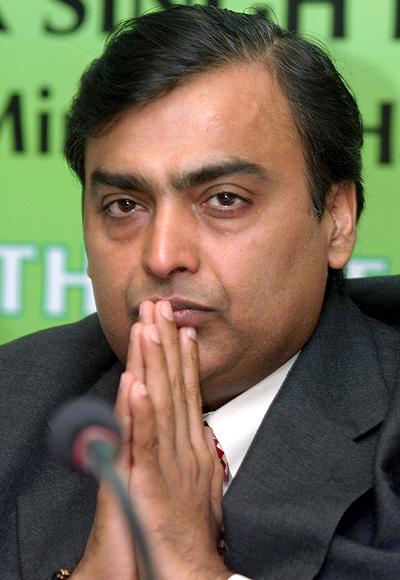 | « Back to article | Print this article |
Gas price hike: OilMin rebuts charges of windfall gains to RIL
A week after doubling of natural gas prices was approved, the Oil Ministry on Friday rebutted charges of the move resulting in windfall gains to Reliance Industries, saying new gas production from the company's fields will not start before 2017-18.
"Presently it (RIL) is producing only 10 per cent of the gas production in the country. With the new price, it is expected that their production from KG D-6 will increase with the additional investment," the ministry said in a statement.
The Cabinet Committee on Economic Affairs had on June 27 approved pricing of all domestic gas through Rangarajan formula from April 1, 2014. The price of gas as per the formula is likely to be about $ 8.4 per million British thermal unit as opposed to $4.2 currently.
The increased price will help monetise discoveries which are not viable at current rates, it said.
"However, the gas flow (from the new fields) is not likely to start before 2017-18 and therefore, allegation of any windfall gain is misconceived," the statement said adding more than two-third of the domestic production is by public sector firms which stand to gain the most from the price hike.
Click NEXT to read more...
Gas price hike: OilMin rebuts charges of windfall gains to RIL
The Ministry said the main reasons for weak domestic gas production was lower sale price.
"The present price of $4.2 per mmBtu has not been found to be feasible and the Ministry is not approving the development plan for the lack of commercial viability. Around 3 trillion cubic feet of gas reserve is waiting to be exploited," it said.
The Rangarajan formula for pricing will apply to all forms of natural gas - conventional, shale gas and coal-bed methane (CBM), and would apply from April 1, 2014.
"These guidelines shall apply from April 1, 2014 and shall be applicable for five years after which market discovery price could be adopted as per the road map being prepared by Dr Kelkar Committee," the statement said.
Meanwhile, CII in a statement said it was "in favor of dollar based gas pricing and the CCEA's recent decision to increase the gas prices will not only incentivise investment in exploration and production, but will also result in increased revenues to the government which could then be invested in various development programmes."
"This is also directionally a step towards achieving market determined pricing which will encourage the development of a competitive gas market in the country," the chamber said.
Click NEXT to read more...
Gas price hike: OilMin rebuts charges of windfall gains to RIL
The Ministry said as per the Rangarajan formula, the price for natural gas in April-June 2013 comes to $6.83 per mmBtu. It however did not indicate the price of gas in April next year.
RIL's minority partner, Niko Resources in a statement said $8.4 will be the price in April 2014 and will be revised quarterly.
The Ministry said during the course of circulation of the Cabinet note on revising gas prices, the Planning Commission suggested a price of $11.18, Finance Ministry $6.99 to 8.93, Department of Fertilizer $6.68 while whereas Ministry of Power opined that we should stick to the present cost plus regime which comes to around $4.14 per mmBtu.
"However, the price of $4.2 is not found to be viable for sustenance of the domestic production of gas and all the operators are demanding increase in price," the statement said.
The Gujarat State Petroleum Corp (GSPC) owned by Government of Gujarat has been demanding a price of $13-14 for its Krishna Godavari basin block.
"Even the PSUs like ONGC and Oil India Ltd have been repeatedly representing for increase in gas price as the production will not be viable at any price less than $7," it said.
Click NEXT to read more...
Gas price hike: OilMin rebuts charges of windfall gains to RIL
The domestic gas production in the country has been falling drastically short of the demand and the present deficit of 142.78 million standard cubic meters per day is expected to increase to around 234.26 mmscmd in 2016-17.
"Therefore, there will be huge dependence on the import of gas at much higher price of around $14 per mmBtu and above, which will simply become unaffordable for consuming sector," the ministry said.
Simultaneously, the investment in exploration and development has consistently fallen from $6 billion in 2007-08 to around $1.8 billion in 2011-12. At the same time, Indian companies have already invested $27 billion in the E&P Sector abroad and the another $10 billion is in pipeline.
"It is important to note that every $1 per mmBtu increase in the gas price would result in an additional burden of approximately $1 billion. However, half of it i.e. around $500 million will come back to the Government in the form of royalty, profit, petroleum taxes and dividend," it said.
The additional income can take care of the additional subsidy burden of fertiliser and LPG, if the Government decides to absorb the burden, the ministry added.



